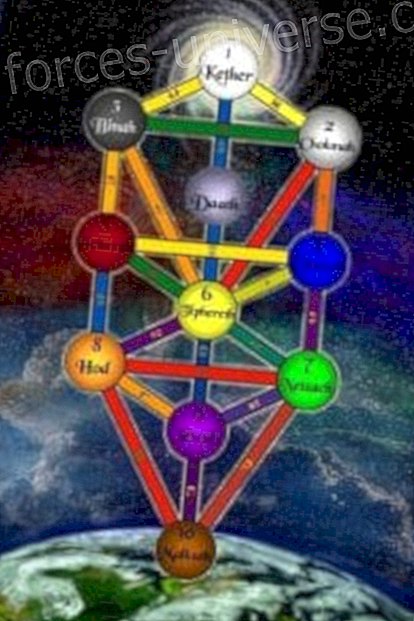By the ways of God. Reflections on our spiritual quest. The path of meditation
- 2018

In the first article of this series I briefly described the path of meditation as the path of our spiritual quest. Now I will expand a little the information I have found on this path . As this is still a limited exhibition, in advance I invite readers interested in this path to investigate further.
While it is true that it is not possible to accurately date its origin, it is a fact that meditation techniques are born in the ancient Vedic religion of India, whose texts are estimated to date from about 1, 000 to 2, 000 years BC It is presumed that the contents of these texts already existed and were transmitted orally long before that time.
Out of discussion is its origin in the Hindu religious tradition and the transcendence, with some modifications, of meditation techniques, to other religions, especially through yoga. Thus, we find them in Buddhism with different versions, as in Judaism, Christianity and Islam, to mention some of the main religions today.
In its different versions, the common goal of all meditation techniques is to release consciousness from the constant distractions and ramblings of the mind and through that released consciousness reach the highest possible level of spiritual development, which varies depending on religion or of the practitioner's beliefs. To achieve the stillness of the mind that is sought with meditation, different strategies are used, which could be grouped into two types of techniques such as the most used or the combination of both .
- Concentration: In this technique, the attention of the mind is focused on a physical or mental object. The most basic concentration is in the body itself and in the breath.
- Contemplation: In this other, the mind observes itself, contemplating the thoughts, emotions and feelings that arise in the process, without identifying with them, without judging or controlling them.
There are so many meditation techniques that it is impossible to consolidate them all in one, and even in a few methodologies, so each interested in undertaking this practice, depending on their religion or belief, must be well documented in each of the options and select that that best suits your search and especially the goal of spiritual growth that you want to achieve.
How we move on the path of meditation
From my point of view, what motivates us to walk the path of meditation is the feeling that something is missing in our lives, that our life experience is not as we would like. It is as if we had a void in some part of us that we fail to fill and this instinctively leads us to search within ourselves for what we cannot achieve outside.
In the first stage of the trip, we must learn to release our body from the tensions that we normally have and that have become so daily that we don't even realize they are there. The easiest way and at hand to achieve that liberation is to concentrate on relaxing our body and our breathing, which allows us to reach the levels of tranquility and peace we need to advance to the next stage. In many books we will find relaxation techniques that will help us navigate this first stage.

Once we achieve the levels of relaxation required to continue moving forward, we must learn to free our mind from constant and sometimes incoherent bombardment of thoughts, for this we have to let them arrive and disappear, without trying to control them, enjoying that sensation. The silence and peace between the disappearance of one thought and the arrival of the next. As we enjoy that sensation more, it will continue, announcing that we are getting closer to our goal. There are different meditation techniques that will help us move through this stage and they all seek to quiet the mind and bring it into the state of tranquility that we need to achieve our goal.
Once we have quieted our mind, we must free our consciousness from the illusion of being an individual entity and separate from the rest of creation. The easy way to achieve this is to give ourselves fully to the sensation of silence and tranquility that we already met in the previous stage and submerged in that silence and that peace there will no longer be a self that has sensations or thoughts that disturb us.
In that state of self-absorption we will realize that someone observes us and we will understand that whoever observes us is our own consciousness that has already taken control of itself, without the disturbances of the Self. In that state of consciousness we will feel that there is no longer an “outside” or an “inside” of us, that we are part of the whole and that in that state we no longer need a physical body to be the essence that we really are.
Obstacles in the path of meditation
One of the main obstacles we encounter on this path is desire, which is that hobby we have to feel sensory pleasure . Desire disrupts our goal of relaxing, because just as the mind does not conceive to stop thinking, the body does not conceive to stop feeling. If we fail to overcome it, we must take any other path where this obstacle does not prevent us from moving forward.
If we manage to overcome the desire to constantly please our senses, the next obstacle that is normally presented to us is impatience, which is the feeling of not moving forward, which leads us to try to accelerate the pace and fall into the trap of the vicious circle from seeking to control the generation of thoughts in our mind and with it, to generate more impatience.
If we fail to overcome impatience, it is better that we take another route, because in this we will keep circling without making progress. If we manage to overcome it, the next obstacle and perhaps the most difficult to overcome is our self, that entity that has created our mind to relate to the outside world and that throughout life we have been investing with our ego, confusing our Awareness with that entity.
If we fail to overcome the illusion that we are that self that has created our mind, we must take one of the other ways. If we manage to overcome it, we can only surrender to that state of liberated consciousness already described in the last stage of the journey and in that state we finally meet God, with the whole or with the superior entity that governs our religion or belief.
I consider it important to point out that some religions and sects that practice meditation are atheistic or agnostic, so the ultimate goal of their meditation is not union with a supreme being, but the ultimate liberation of consciousness from earthly bonds. We also find in monotheistic religions, that the purpose of their meditation is not to liberate consciousness but to reach sublime states of the soul in union with their deity.

_____
AUTHOR: Juan Sequera, author for the White Brotherhood family.






